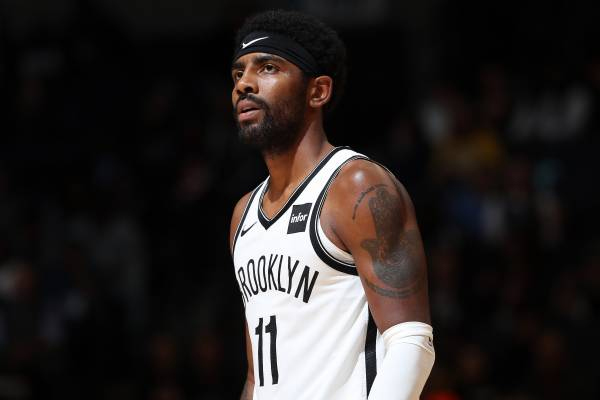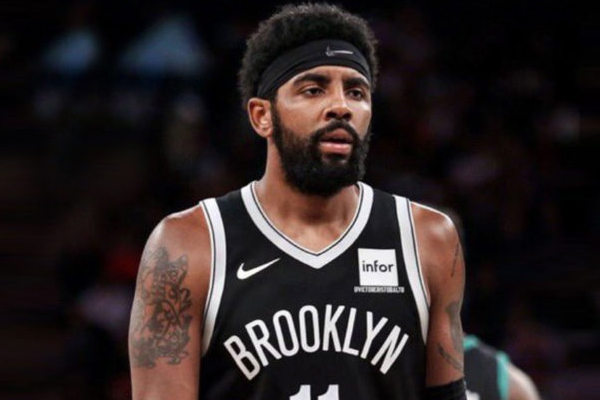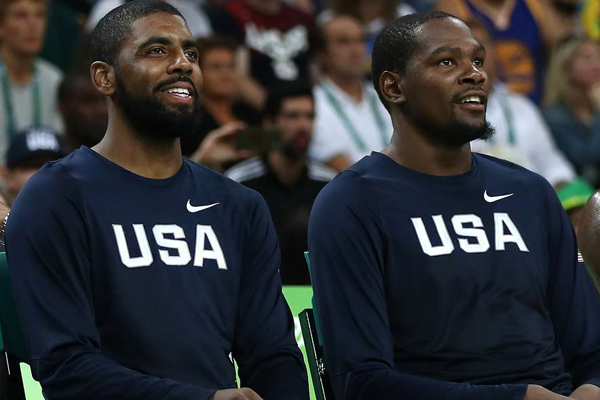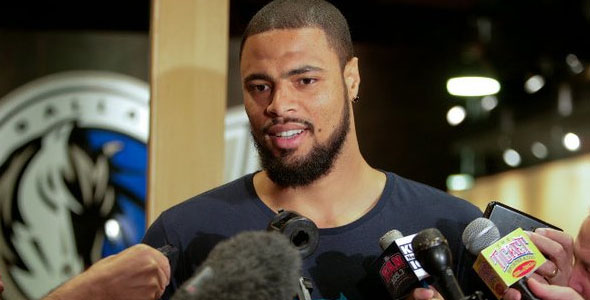 Heading up to the 2011 NBA Draft on June 23rd, the singularly most debated question has to be who will the Cleveland Cavaliers select with the #1 overall pick? In a draft where many top flight collegiate players chose to remain in school until the whole potential NBA labor issues are sorted out, Duke’s Kyrie Irving and Arizona’s Derrick Williams are considered the Top 2 prospects.
Heading up to the 2011 NBA Draft on June 23rd, the singularly most debated question has to be who will the Cleveland Cavaliers select with the #1 overall pick? In a draft where many top flight collegiate players chose to remain in school until the whole potential NBA labor issues are sorted out, Duke’s Kyrie Irving and Arizona’s Derrick Williams are considered the Top 2 prospects.
In a supposed down year for draft prospects, this year’s top two prospects have been compared to NBA royalty when assessing their talent levels. Irving has been mentioned in the same circles as the “next” Chris Paul while Williams has been compared to everyone from Blake Griffin to Shawn Marion.
Towards the end of the NCAA regular season Duke’s freshman PG Irving was getting all the love as everyone’s choice at #1. But after he decided to skip the athletic portion of the Draft Combine, coupled in with Williams outstanding showing in the NCAA Tournament, and measuring out well at the Combine, focus has now begun to shift towards Williams with the Draft barely 10 days away.
5 Reasons Why the Cavs Should Draft Williams Over Irving:
1) Irving’s Toe Injury
One of the big mysteries during the NCAA season was just how serious was Kyrie Irving’s toe injury. Coach K and the Duke athletic training staff was very cryptic when pressed by reporters as to exactly what his diagnosis was and just how soon he would return. Some argue that after playing good, but not great upon his return during the NCAA Tournament, could he have come back too soon, and done further damage to the injured toe?
For a point guard, nothing is more important than your feet, or big toe to be more specific. It is the center point of balance and is crucial in pushing off and changing direction. In a league now dominated by the PG position, think Rose, Paul, and Westbrook, should the Cavs gamble their future on a potentially great floor general who already has proven to have a bad wheel?
Unlike Irving, Williams played two months with a broken finger on his shooting hand and still shot nearly 60% from the field, 57% from behind the arc and 75% from the stripe. Players who can play through injuries are valuable, but players who can perform through injuries are something else entirely.
Hands down, the winner here is Williams. Irving has played in 11 games, plus 3 Tournament games while Williams has played in upwards of 70 college games including 4 Tourney games in leading his club into the Elite Eight this season. Williams has proven to be an above average scorer, rebounder, and 3 point shooter in his two seasons at Arizona posting career averages of 17.8 ppg, 7.8 rebs, and 42% on threes.
Irving on the other hand has also been spectacular, averaging 17.5 ppg and 4.3 ast, while shooting 52% from the field and 46% on threes. Those are great numbers but when taking a closer look upon his return from injury, against top tier competition in the Tournament, Kyrie seemed a step slower despite dropping 28 points in a season ending contest against Arizona.
Irving was runner up as the ACC Freshman of the Year, to UNC’s Harrison Barnes, while Williams is the reigning 2 time PAC-10 Player of the Year. Ok, the ACC has been a better conference over those two years but you can’t criticize Williams for besting the competition that was put on the court to compete against.
3) Good Combine Showing
The notion that Kyrie Irving had nothing more to show by competing against other point guards at the Combine has backfired. Although he measured out better than expected at 6’3 in shoes, he showed up overweight(191 lbs) and out of shape(10% body fat). Not exactly what you want out of your point guard. Don’t the Cavs already have a guy playing PG in Baron Davis who has been ripped over his career for being out of shape?
Williams was one of the darlings of the measurement portion of the Combine as he measured out a legit 6‘8 3/4 and 248 lbs, making him a viable option at both forward positions. He also showed an impressive 71.5 inch wingspan, and an outstanding 9’0 inch standing reach, which measures a full 3 inches more than Blake Griffin two years ago.
To be honest, I don’t think anyone would argue that the Cavaliers need virtually everything. But point guard probably isn’t their number one need. Sure, most fans would clamor for an upgrade over Baron Davis and Ramon Sessions but the team has more than $37 million committed to the players through 2013. Barring a trade, both will remain on the roster and it’s not exactly a bad thing.
When healthy, Davis is an experienced floor general who has a knack for scoring. He could prove valuable in a mentoring role for an up-and-coming fresh faced PG like Irving, Knight, or Walker. Prior to the trade for Davis, the Cavs were 10-47. With Davis, they went a much improved 9-16, including 4-5 as a starter. Hardly Playoff caliber numbers, but an improvement nonetheless.
Despite the improved play of JJ Hickson this season, wouldn’t an athletic game-changing SF/PF hybrid, who has a bit of Blake Griffin in him, like Williams be more entertaining to watch than an aging Antawn Jamison or Luke Harangody down low? Imagine the excitement and energy as Derrick Williams serves up a facial dunk on Lebron upon his return to Gund Arena.
5) Athleticism and Intangibles
Williams has proven to be a very clutch player, coming up with a game-saving block against Washington, another last second block against a potential game-tying shot in the NCAA tournament against Memphis, and then a game-winning three-point play in the very next game against Texas. Upon Irvings return during March Madness, many argue that he altered team chemistry, affecting the flow of the Blue Devils offense. Team leaders Kyle Singler and ACC Player of the Year Nolan Smith clearly were out of sorts playing alongside Irving. Some even felt that Irving was trying to pad his stats in an attempt to improve his draft stock. Seem far fetched? Irving became and still is the #1 rated prospect on most draft boards.
One other area where Williams would provide immediate benefits is in efficiency and getting to the free throw line. The Cavs ranked a miserable 29th if FG efficiency last season at a paltry 43%. Williams shot an impressive 59.5 % from the field and led all NCAA players by getting to the line more than 8 times per game. While he’s nowhere near Dirk Nowitzki in FT accuracy, he did connect on a respectable 75% from the charity stripe, putting pressure on opposing defenders and causing foul trouble.
In closing, Williams appears to be the safer choice. There are many arguments for and against each player as the #1 selection. Maybe they shouldn’t chose either and draft the ever improving Enes Kantner as the foundation of the franchise going forward.
Check out Derrick Williams NCAA Highlights Mixtape:
Allen Moll has been a lifelong NBA and NCAA College Basketball fan who watches and studies games religiously, and coaches youth basketball in his native Lehigh Valley region of Pennsylvania. Allen also provides content to Bleacherreport.com, Upperdeckblog.com, in addition to being a tenured NBA and NCAA columnist for TheHoopDoctors.com.






















